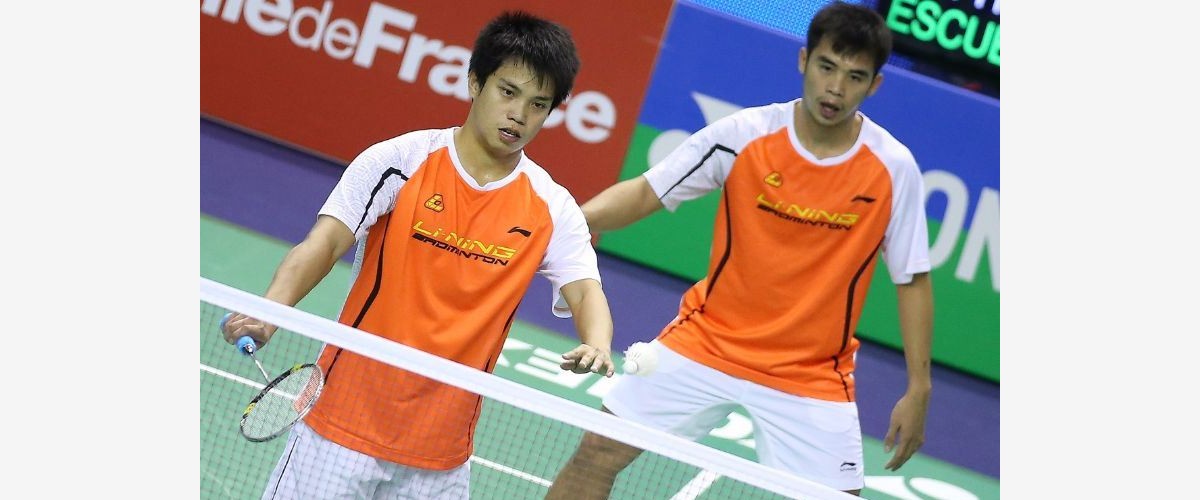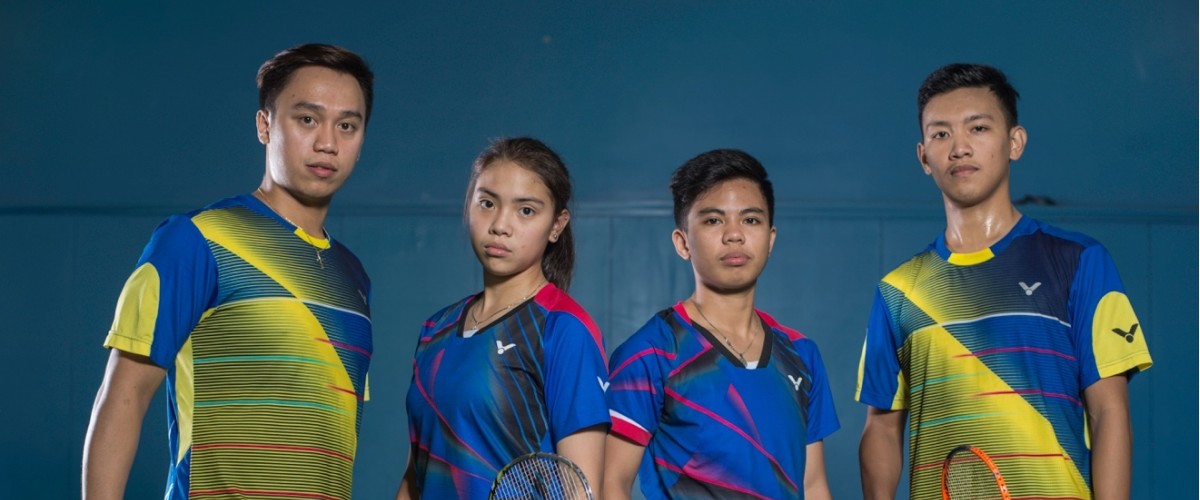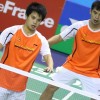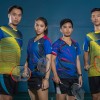It is by no coincidence that badminton is one sport that business giant Manny V. Pangilinan holds dear among the many disciplines supported by the MVP Sports Foundation.
Pangilinan believes that with the right program, motivation, exposure and support, the country can produce world-beaters in the sport.
The way the long-time sports patron and Smart/PLDT chief rescued the country’s national pastime – basketball – from dysfunctional leadership; revitalized one of the country’s premier sources of pride in the international arena – boxing; further bolstered the already established taekwondo; extended an additional lifeline to football; acted as savior to softball; and fleshed out the role of benefactor to many other sports, is worthy of praise and admiration.
But it has been quite a while since the likes of siblings Kennie and Kennevic Asuncion and Weena Lim have bucked the odds and made it to the world stage and the Olympics.
And questions have lingered as to why in a country of 100 million people, the sport can’t produce truly world-class badminton players in the last decade or so.
In fact, Filipino shuttlers have lagged behind their regional counterparts, who have ruled the world through the likes of Taufik Hidayat of Indonesia and Malaysian Lee Chong-wei, for the longest time.
This despite support to the sport aplenty since JVC came into the badminton scene in the early 2000s.
And when the once top electronic firm left, the likes of Bingo Bonanza, FDG Cup, Prima Pasta and Toby’s, among other corporate backers, kept the players buzzing and humming with their annual, international-flavored tournaments.
Still, hardly there emerged a star in the horizon although Malvinne “Poca” Alcala once loomed as the brightest prospect after she ruled the Singapore Youth International U-17 back-to-back.
Now 20 and spearhead of the newly-crowned UAAP badminton champion UP, she also won the Australian Junior International U-19 and bagged a silver medal in the German Junior U-19.
But for one reason, the 5-9 ace briefly bowed out of the scene when she went to college, studying for one semester at the National University before moving to Diliman to pursue a BS Physical Education career and is now playing as anchor of the school’s campaign in the country’s premier collegiate league.
In the recent FDG Cup, an annual tournament put up by Frederick D. Go, Alcala seemed to have lost her sheen and once awesome form.
She had bowed to eventual champion Bianca Carlos, another player on a comeback trail, in the early goings of the tournament, which also featured the country’s current stars, including Sarah Barredo, Nicole Albo and Mariya Sevilla, among others.
Alcala’s younger brother Mark has also started to dominate the men’s side although Malaysian Arif Latif foiled the 17-year-old rising star’s back-to-back title drive in the last FDG Cup.
Still, Mark remains the country’s best bet with his talent, speed and power which he hopes to sharpen by competing abroad when he can.
Peter Magnaye and Paul Vivas have also put the country on the world badminton stage in 2014 when the top PBA Smash Pilipinas pair bested a tough field, including their top seeded French pair rivals in a thrilling finale, to snare the Swiss International men’s doubles crown.
But winning is one thing. Sustaining it is another.
Nelson Asuncion, father and coach of the Asuncion siblings and many-time national team mentor, has stressed the need for the governing Philippine Badminton Association to come up with a no-nonsense program that should cater to kids as young as eight-years old and a ranking tournament that would effectively gauge each player's skills, talent and performance.
That would also ensure the steady flow of talents in the sport.
The PBA program is actually running and in full gear and the MVPSF’s infusion of support starting in 2012 has kept it going with annual, year-round tournaments held in various parts of the country through the MVP Juniors National Championships, scouring potential talents even from the remotest of places.
The MVP Juniors’ series of tournaments was basically put up to discover and identify new badminton stars from the grassroots and train and develop them to become members of future national pool and teams.
It has also initiated an outreach program – dubbed the MVP Jrs Cares in the MVFSF’s continuing effort to introduce badminton to the youth aged 13 years old and below, including those who are not yet into the sport. It is being held side-by-side with the PBA’s grassroots development program.
The national juniors circuit has three qualifying tournaments, culminating in the National Finals where the qualifiers get that rare chance of slugging it out with the best and the brightest in the field.
Sure, oftentimes the veterans end up heads and shoulders above the young ones, but the MVPSF believes that no sooner would the youth take over their idols given the right motivation, exposure and support.
The MVP Juniors program also guarantees the smooth transition of talents year in and out, thus boosting and further expanding the base of talents.
This has been evident based on the huge turnouts in tournament after tournament held over the last few years, the players gaining not just the needed exposure and experience but more importantly the ranking points, this being one of the country’s junior ranking tournaments under the Philippine National Ranking System (PNRS).
Kerr Aloyan Alogno, an 18-year-old native of Cadiz City, is one of the program's better finds, having captured the 2015 Palarong Pambansa secondary singles gold medal in Tagum City.
He also competed in the ASEAN Schools Games the same year in Brunei, emerging the lone player to hurdle a fancied Indonesian rival.
Other names being groomed as the next batch to dominate the badminton scene are John Bryan Bernardo, Christian Dorega, Charles Alcaprio, Chanelle Lunod, Jeff Allissandro Cruz, Jewel Albo, Clarence Villaflor, Karyll Rio, Arthur Samuel Salvado and Lanz Ralf Zafra.
Smart Sports top official Christopher Quimpo has expressed hopes that the country will be able to produce more talents in the coming years.
"Hopefully, we will discover more hidden gems from the provinces because this is really the MVPSF's goal," said Quimpo.
Art Aro, also of the MVPSF, has maintained that the country is seeing a tremendous potential for Filipinos excelling in the sport as shown by our neighboring ASEAN counterparts who have produced world and Olympic champions in Hidayat and Lee.
“We Filipinos are not that far-off from them as far as physiological characteristics are concerned,” said Aro.
“If they can do it, why can’t we?” he added, matter-of-factly.
He also noted that as exemplified by the Asuncion siblings, the Filipinos have what it takes to become world contenders.
“Kennie and Kennevic were actually handicapped because of their height. But they nevertheless showed their dominance over taller, heftier opponents,” said Aro. “Badminton is arguably the second most popular sport in the country now next to basketball and with over 100 million Filipinos, I believe the chances of finding that diamond in the rough in the whole archipelago is very very good.”
But he stressed that the PBA needs to implement a comprehensive grassroots and talent identification program with support structures in place to encourage kids to be exposed to badminton.
“The MVPSF has actually shifted its priority to grassroots programs to supplement the elite programs of the various NSAs (national sports associations) we support. All of this will definitely take time and will not happen overnight,” said Aro. “For as long as the programs of the PBA has continuity regardless of leadership, we will see another Olympic champion from this region but this time he/she will be a Filipino.”
True enough.
After all, the man behind the program has the initials that underlines his worth to Philippine sports.
MVP.





